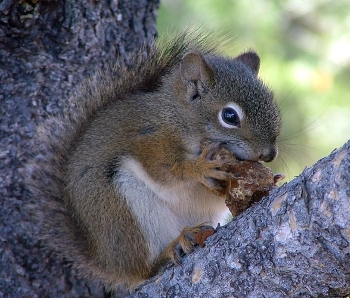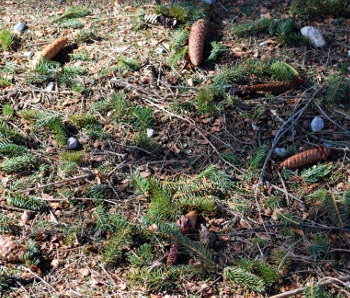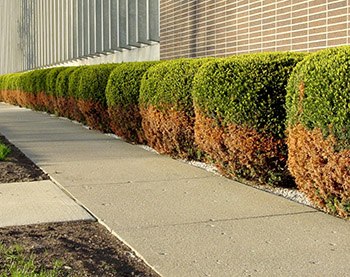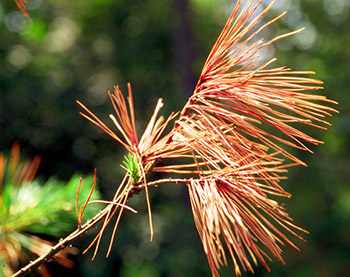Winter brings evergreen damage
Browning or missing needles and severed branch ends are being noticed on many landscape trees. Find out why your evergreens are not so ever-green.

Spring is on the horizon after what felt like a year-long winter. Many gardeners are now looking at their evergreens and seeing damage they did not expect, such as evergreens that are browning or missing twig needles. Let’s takes a look at the usual suspects in these crimes against nature.
Missing needles
A number of evergreens, particularly yews, are missing needles and have fallen needles on the ground. White cedars and arborvitae have also been thinned. When winters are harsh, deer look for ways not to starve to death. A close examination of bushes or small trees will find needles missing up to a certain height. Deer can stand on their hind legs to extend their reach upwards, so damage can go from close to the ground to possibly 6 feet in height. If deer can stand on a deck or porch, this also gives them access to the higher needles. As they are browsing off needles, many are dropped to the ground. Easy evidence to see is the stomped trail parallel to the yew or cedars, deer prints in the snow and lots of pelletized droppings.
White cedars have always been deer favorite food sources in the winter. Yews are poisonous. It only takes several grams to kill an adult cow. In the winter, however, when deer are starving, they can consume quantities of yews with impunity. Once the snow melts and yews begin putting out new growth, it may be necessary to prune the shrubs to areas that have living shoots.
For information on how to discourage deer, read “Discouraging deer year-round in your yard: Facts versus fantasies” from Michigan State University Extension.
Spruce branch ends severed
In late winter, large spruces can have a blanket of branch tips covering the ground. This is happening high enough in the tree that deer could not reach. To the untrained eye, these ends are beautifully green and nothing seems to be missing. This is the handiwork of the hyperactive red squirrels. They hang on branches and bite off the nearby branch tips. Once they have dropped many tips to the ground, the squirrels descend and begin eating the tender, unopened buds. The buds at the end of the branch tips are brown and covered with scales. They look like a narrow teardrop. Squirrels will peel back the scales and eat the tasty center. The bud has pushed out scales with the center missing. They always cut off many more than they can eat.
For more information on red squirrel damage, read “Red squirrel injury to spruce trees in winter” from MSU Extension.


Left, An innocent looking red squirrel enjoying a snack while plotting his next move. Right, Signs of red squirrel feeding injury: piles of pruned off branch tips. Photo credits: Michael Mengak, University of Georgia, Bugwood.org (left) and Jill O’Donnell, MSU Extension (right).
Browning needles
If the evergreen damage seen is brown needles, there are several factors to consider. Some of these needles may not turn brown until the weather warms. Salt is great for melting snow and ice, but it can be the enemy of evergreens. Salt may get on evergreens from careless application or nearness to that area and salty water gets into the soil. If snow is plowed during extremely cold weather, the salt is there and did not work. If the plowed snow is in the root zone of the evergreens, eventually it melts, salt included.
Evergreens close to a salted road may not get salt on the roots, but a salt spray. As vehicles pass by, water and salt is turned into a mist and can blow with the prevailing winds. That’s why evergreens on the east side of the road can show more damage than those in other locations. It is more obvious that salt spray is the problem because the side of the tree closest to the road is showing damage. The problem could also be winter or wind burn caused by strong winds blowing over needles and drying them out. It could be a newly planted evergreen or one with extremely short needles.
For more information on salt-injured trees and wind burn, read “Sizing up winter injury” from MSU Extension.


Left, Salt damage along sidewalk. Right, Winter burn injury to foliage and terminal bud. Photo credits: Joseph LaForest, University of Georgia, Bugwood.org (left) and Linda Haugen, USDA Forest Service, Bugwood.org (right).
Currently, it’s too late to prevent damage. Put that on your calendar for next November!



 Print
Print Email
Email


